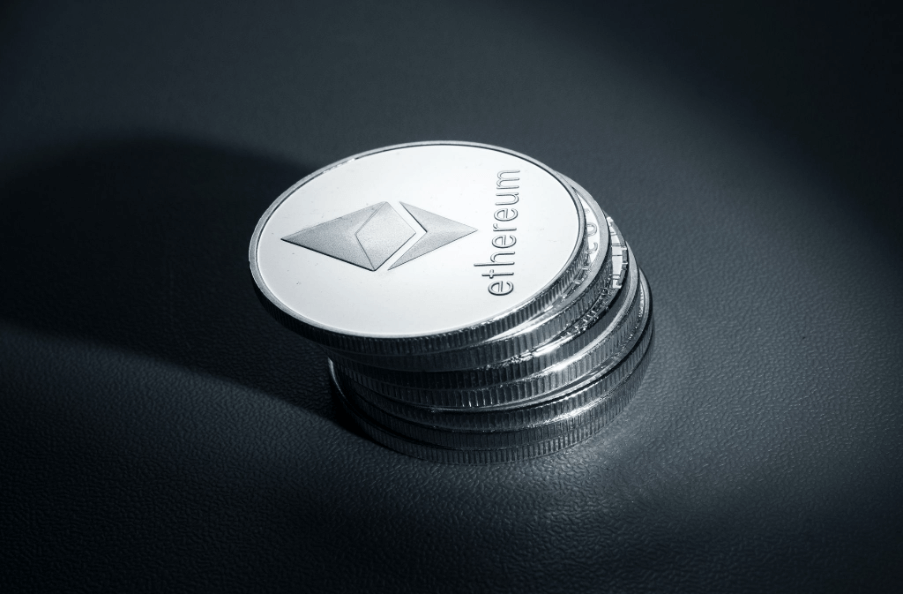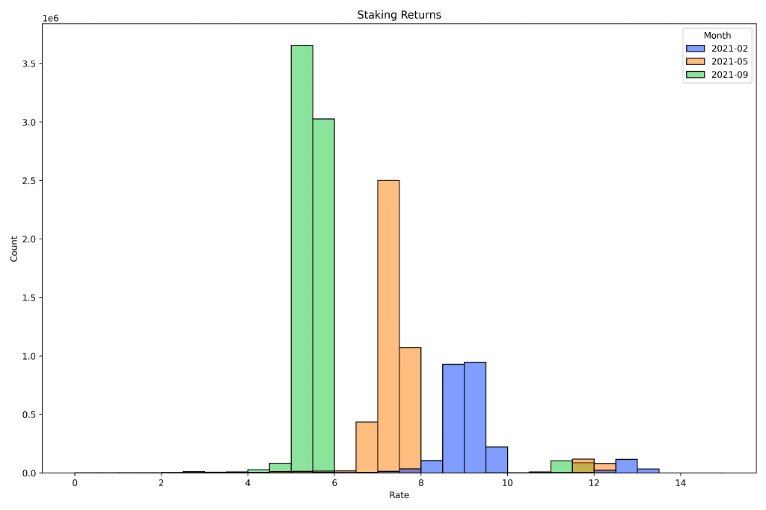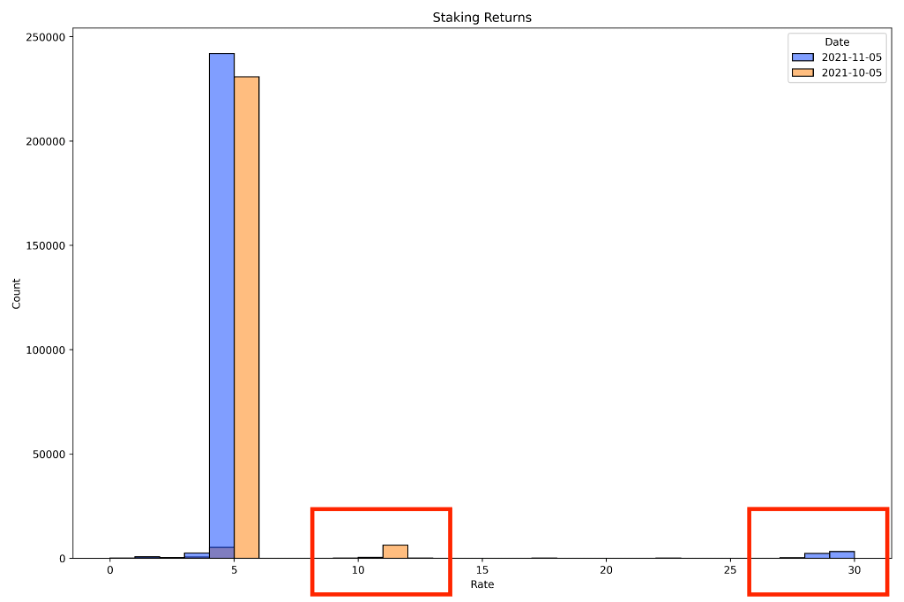Pennies from Heaven
An introduction to the Attestant Overnight Rate.
 Figure 1: Photo by Jievani from Pexels
Figure 1: Photo by Jievani from Pexels
In November 2021 we saw the first upgrade to the Ethereum beacon chain. Code-named Altair, it was a monumental change that paved the way for the new proof of stake consensus mechanism that will replace proof of work. Since Altair involved a change to the protocol it had to be implemented as a hard fork, meaning that a majority of node operators had to accept the upgrade for it to work. As a result of the great cooperation between developers in the Ethereum ecosystem, the fork was successfully completed. There was a minor teething issue where some block proposals were missed but these were quickly resolved.
The original design for proof of stake was based on years of research by various teams funded by the Ethereum Foundation and can be summarized as follows. A validator has two main duties: proposing blocks and attesting that the proposed block represents the current head of the chain. Each duty has its own reward so that a successful block proposal in a timely manner with plenty of attestations from other validators will earn everyone involved a few gwei with the larger share going to the block proposer. The beacon chain protocol selects block proposers randomly so over time every validator gets the chance to earn around the same level of network rewards.
However, there are disincentives for those that don't play by the rules. If a validator fails to turn up for its duty then it is punished to the level that it would have earned had it been present. Of course, if a validator consistently fails to perform its duties then it will eventually be exited from the network.
The worst case scenario for a validator is if it deliberately breaks the rules, perhaps by voting twice for two different blocks within the same epoch. If such behaviour were to go unpunished it would rapidly destabilize the network and so a massive loss is imposed on any validator violating the rules in this manner. This "slashing" ensures that it is not cost-effective for a bad actor to maintain an attack of this type and that they rapidly lose access to validators capable of contributing to it. It should be noted that many of these penalties were set to low values at the start to allow developers the space to learn while the network matured.
Now that we have an understanding of how the Ethereum network rewards its validators, we can see that, in essence, Ethereum network rewards are a credit risk free rate. This means that they are the crypto equivalent of a national currency treasury bond, such as a T-Bill in the US or a Gilt in the UK. There is virtually no possibility of a default by either the US or UK governments on their own bonds since they are the ones actually printing the money that is paid out. Therefore these bonds represent the safest possible investment but as a result deliver a low interest rate that may even be below inflation.
To be able to compare one investment against another it is necessary to accurately measure the rate of return. In traditional finance, an interest rate can be defined as a volume-weighted bank rate but is susceptible to manipulation as in the case of LIBOR. In Ethereum, network rewards are defined in terms of verifiable metrics that are fully transparent and observable on the blockchain (number of validators, time taken to propose a block, number of supporting attestations etc).
The Attestant Overnight Rate (AOR) provides a reference rate for Ethereum network rewards. The calculation methodology is similar to US Federal Funds - weighting a return by the validator balances that produce them. More formally, the AOR is a volume weighted median of the annualized rate of return for every qualifying validator. The return at time on an eligible validator is calculated as:
where is the validator balance at time and is the validator balance at time measured in days.
The above equation looks a bit daunting, so it's worth working through a simple example.
The Ethereum beacon chain requires 32 ETH per validator to be eligible for network rewards, but anything over that will be ignored. As a result, validator rewards do not compound automatically. A recent validator with 32 ETH @ 10% network reward would receive 3.2 ETH, but an established validator with 40 ETH @ 10% network reward might expect to receive 4 ETH, but still only gets 3.2 ETH so its return is actually 8%. For this reason investors assess their return on deployed capital using a volume weighted rate.
The fact that recent validators automatically outperform established ones is not a problem but a deliberate future-proofing of the rate. When the Merge is completed, and validator balance re-allocation is possible, stakers will be able to use rewards to start new validators, compounding their returns.
 Figure 2: Staking returns for combined months across all validators. The histogram is produced on a validator-by-validator basis per day
Figure 2: Staking returns for combined months across all validators. The histogram is produced on a validator-by-validator basis per day
To illustrate this time-dependent effect at work, consider Figure 1 above. Staking returns across all validators were measured at different months this year (February, June, October) and the trend of steadily decreasing returns is clear. As a larger number of validators enter the Ethereum network (which is capped per day), return decreases. It is important to note that the graphs are bi-modal (i.e. have a double peak) where the majority lie towards the lower end of the annualised returns, but there are a small number that earn excessive rewards. This is due to the well-rewarded duties that validators are required to perform. However, it should be noted that on a long enough timescale all validators will receive those duties, but they are infrequent enough that they cannot be relied upon on a day-to-day basis and so are excluded from the AOR.
If we now look at the various AOR percentiles (1, 5, 25, 50, 75, 95, 99) over time from genesis (Dec 2020) to the present (Figure 2), we can see that network rewards are trending down as expected, but also becoming less volatile in themselves.
 Figure 3: AOR as a function of time showing each percentile.
Figure 3: AOR as a function of time showing each percentile.
This trend towards a predictable network reward rate is reassuring to those running validators given the amount of ETH staked. Network rewards are converging and should plateau according to the protocol.
Observant readers will notice a couple of step changes towards the beginning of November 2021 where the 99th percentile received more rewards at the expense of the others. This is due to the effect of various changes made in the Altair upgrade. One such change is the introduction of sync committees. Without going into the details, this is a new duty that a validator must perform on request, and in return it receives a significantly higher amount of network reward for a period of time. However, this comes at the cost of reducing the middle percentiles and boosting the higher ones.
 Figure 4: Comparing days pre- and post-Altair validator counts against annualised rate.
Figure 4: Comparing days pre- and post-Altair validator counts against annualised rate.
Examining Figure 3 we see that the validators earning around 5% found themselves earning around 0.5% less and increasing in number. The increase in number is not sufficient to explain the reduction in the network reward alone. However, the best performing validators, through the pure chance of being selected for higher reward duties (e.g. sync committees), saw their returns markedly improve from 10% to 30% but they are much fewer in number.
In conclusion, we can see that the pre-Altair returns were markedly higher, but had a higher level of volatility, whereas post-Altair the returns are a little lower but much more steady across the percentiles. This effect reinforces the idea that Ethereum provides a credit risk free rate that can be relied upon to deliver over the long term. There is still a long way to go but the future looks promising.
At Attestant, we have been monitoring and calculating the network rewards of the entire network since its genesis on 1 December 2020. We calculate and publish the rewards earned by the median validator every day, and a full history can be found via the API at CryptoCompare.
As always, if you are interested in using Attestant to meet your staking requirements, please get in touch using enquiries@attestant.io. You may want to download our short data sheet (PDF) which covers our managed staking service.